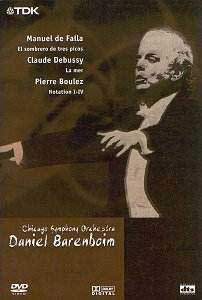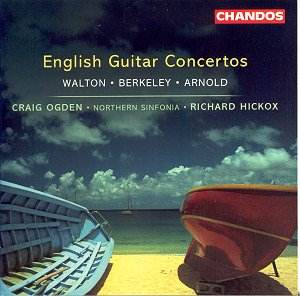 Composer: Pierre Boulez
Composer: Pierre Boulez
Works: Notations I-IV, La Mer, The Three-Cornered Hat
Performers: Chicago Symphony Orchestra, Daniel Barenboim (conductor), Elisabéte Matos (mezzo-soprano)
Recording: Recorded live at the Kölner Philharmonie, 27-28 April 2000
Label: TDK DV-MTKBA
The works of Pierre Boulez, particularly his Notations, serve as a pivotal entry point into the complex tapestry of 20th-century music. Composed between 1945 and 1946, these pieces encapsulate a moment of transition in Boulez’s artistic evolution, wherein he harnesses the post-war avant-garde’s fervor while grounding his style in a meticulous exploration of texture and sonority. The Chicago Symphony Orchestra, under the baton of Daniel Barenboim, presents a performance that strives to navigate this intricate sound world, yet it falls short in several critical aspects.
Barenboim’s interpretation of the Notations is marked by a certain elegance, albeit one that seems to underplay the inherent tension of Boulez’s writing. The ensemble’s execution of Notation II, with its delicate trills in the first violins, is an example of the potential beauty that emerges from Boulez’s complex textures. However, the recording suffers from sound engineering flaws that detract from the clarity of the performance. The focus on individual instrumental voices, particularly the strings, is compromised by poor microphone placement, leaving the listener grasping at the nuances of the score. One could imagine the leader, Samuel Magad, delivering exquisite filigree, yet the auditory experience renders such subtleties indistinct, reducing the first desk’s contributions to an inaudible murmur.
The performance order chosen by Barenboim—1-2-3-4—deviates from the more common 2-3-1-4, a decision that lends an unusual narrative arc to the performance. While this arrangement allows for a refreshing contrast between the sensuousness of Notation II and the frenetic energy of No. IV, it nonetheless sacrifices the clear emotional trajectory that the latter might otherwise command. The climactic moments, particularly the final crash of No. IV, lack the requisite buildup, leaving the listener yearning for a more visceral impact.
Turning to Debussy’s La Mer, the orchestral colors are indeed striking, yet the performance suffers from a lack of idiomatic flair. The delicate interplay between wind and water—so central to Debussy’s vision—is rendered with a certain clinical detachment that diminishes the work’s emotional resonance. In “De l’aube à midi sur la mer,” the tempo shifts, though executed with precision, come across as overly calculated, detracting from the natural ebb and flow of the piece. The climactic “Dialogue du vent et de la mer” offers a resplendent tune, yet it fails to build the necessary momentum leading into its conclusion, lacking the cumulative satisfaction that one might expect from such a masterwork.
The performance of Manuel de Falla’s The Three-Cornered Hat showcases Barenboim’s strengths as a conductor who can bring out characterful solos amidst lively textures. Elisabéte Matos’s assertive contributions bring a suitable vibrancy to the Baroque dances, although her portrayal in the “Danza del corregidor” adopts a somewhat heavy tread, which softens the rhythmic vitality that this music demands. The orchestration remains light, and Barenboim’s direction captures the delightful essence of Falla’s score, even if it occasionally skirts the razor’s edge of rhythmic precision found in more incisive interpretations, such as those by Ansermet.
Boulez’s reflections, presented in a brief encore following the performances, provide a tantalizing glimpse into his thought process, revealing a deeply analytical mind that balances reverence for the past with a desire to innovate. His comments, particularly on Wagner, challenge preconceived notions and invite deeper engagement with the repertoire. However, the contrast between his spry intellect and Barenboim’s more wearied demeanor serves as a reminder of the generational divide in musical interpretation.
This recording is a mixed offering. While the performances reveal moments of beauty and insight, they are ultimately marred by sound quality issues and interpretive choices that do not fully embrace the dynamic potential of the scores. The ensemble’s technical prowess is evident, yet the recording lacks the necessary vitality and clarity to resonate deeply with the listener. A more incisive engagement with the repertoire would have elevated this performance to a level befitting the legacy of these monumental works.



